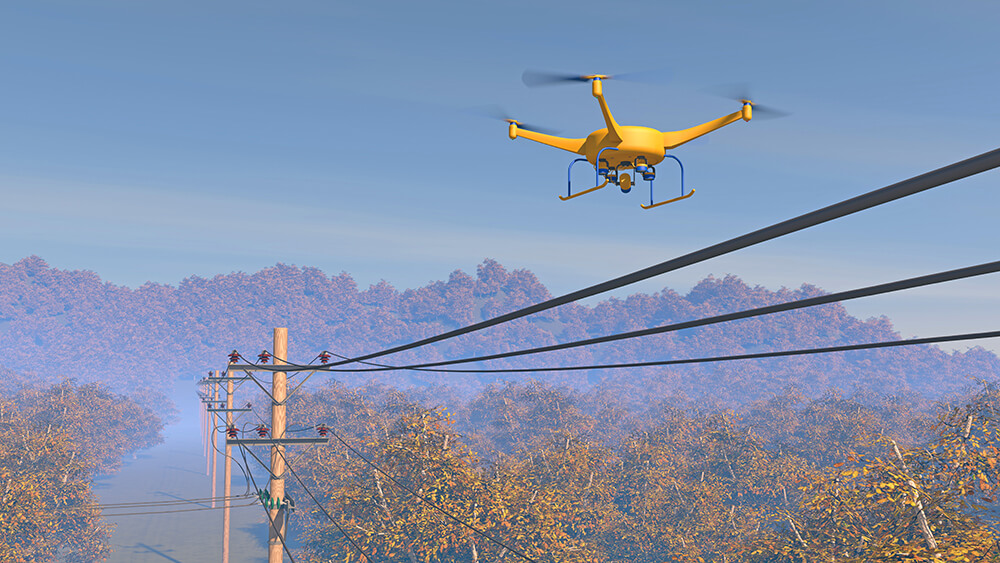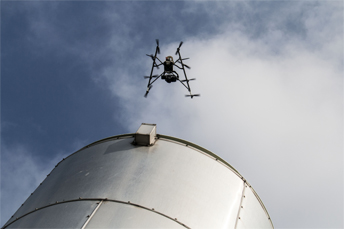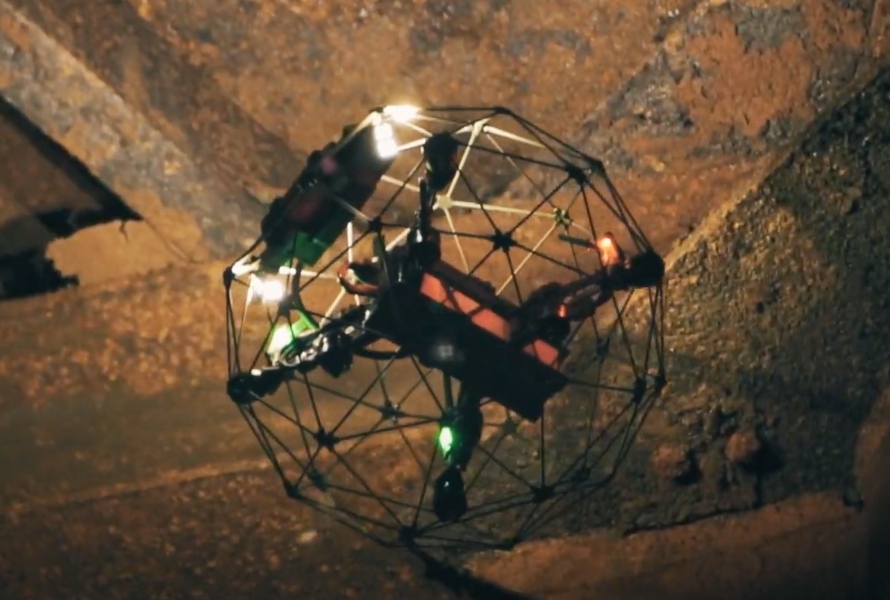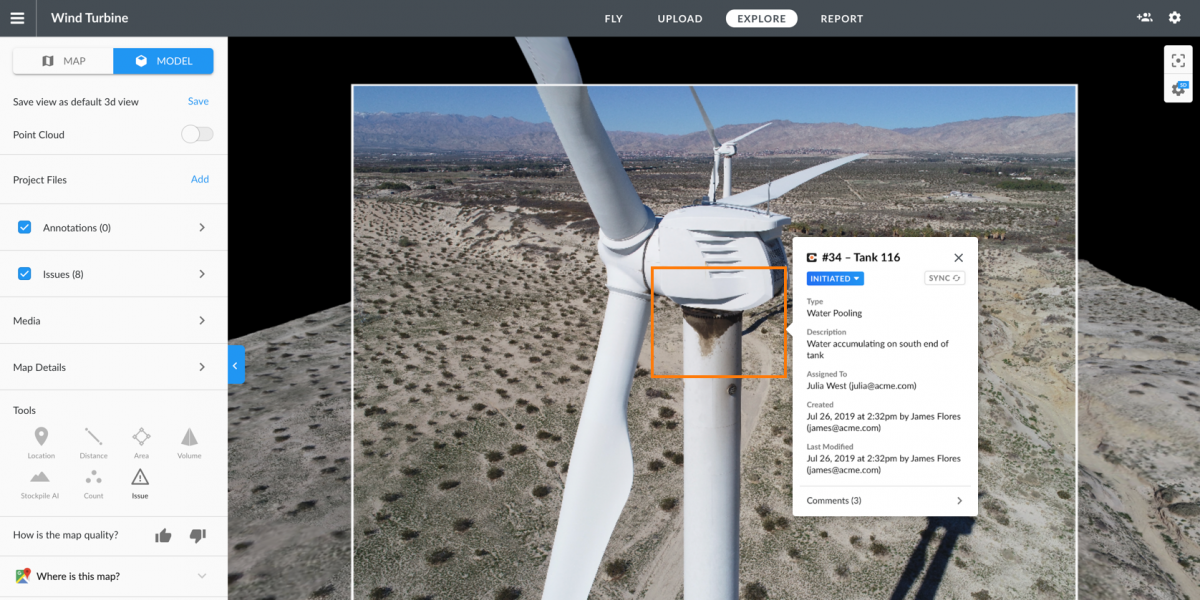The use of drones, although it is not a new technology, in recent years has had a rebound that has allowed its use beyond recreational purposes. The use of drones in visual inspections for predictive maintenance allows visual contact to inspection points with complex access, whether due to height, distance, confinement, or high risk for the analyst.

Benefits of using drones in visual inspections
There are two types of benefits that drones offer in visual inspections for predictive maintenance:
- Improvement of inspector safety: avoiding exposing the inspector to work at heights (access by scaffolding, ladders, or towers), to work near areas of electrical risk, to work with harmful gases, or to work in confined spaces.
- Lower inspection costs: the use of drones allows access to inspection points more economically since you do not have to place the scaffolding, hire cranes, or even hire helicopters. Likewise, inspection points that were considered inaccessible, with a drone it is possible to inspect and monitor the condition in a better way, which usually brings economic benefits. Similarly, it is not necessary to de-energize, shut down, or cool an asset for inspection.
Other benefits derived from the use of drones are the reduction of civil liability policies, improvement of the quality of visual inspections, and reduction of procedures for inspection by not exposing people to risk.

Drone applications for visual inspections
Among the main applications of drones for visual inspections are:
- Monitoring of medium and high voltage towers and lines.
- Transformers
- Boilers
- Steam recuperators in steam turbines.
- Towers, gondolas and blades of wind turbines.
- Chimneys
- Solar panels.
- Conveyor belts.
- Mills.
- Shredders.
- Storage tanks (indoor and outdoor).
- Heat exchangers.
- Pipe supports.
- Civil structure and facades.
- Telecommunications towers.

From another perspective, drone applications can be classified as:
- Outdoor heights: power lines, wind turbines, facades, telecommunications towers.
- Indoor heights: tank interiors, interior structures.
- Inaccessible places: shredders, conveyor belts, solar panels.
Considerations for selecting a drone
As it is a booming technology, you may not have experience selecting drones, either for acquisition or to contract services. Here are some things to consider when selecting a drone for visual inspections for predictive maintenance.
Create a list of all assets and inspection points for which you need the drone. For each case define the height, approximate distance between the drone and the inspection points, and atmospheric conditions (indoor/outdoor, temperature, wind). In this step, it is especially important that you consider the risk of electric arc and emission of gases, flame, or steam near the drone.
Check with your organization that the drone could not be used for some other purpose. Many times having a drone in the maintenance department requires sharing the drone for purposes for which it is probably not prepared, such as marketing, 3D data collection, or GPS controlled navigation.
Make a plan for using the drone. It is important to know the autonomy, flight space, and the periodicity of use (weekly, monthly, semester, or annually).
Define the type of images you want: three-axis, panoramic, narrow focus, video, 4K, thermal imaging. This will allow you to select the appropriate camera and software.
Data management and integration. This is the most overlooked feature when selecting a drone since the proposals always focus on the flight characteristics of the drone. Never lose focus on integrating the information and images captured with the drone into a repository of predictive maintenance reports unique to the company.

A few last tips for selecting a drone:
- Start with the software and not the flight characteristics.
- Make a pilot plan. You will probably have to hire services at the start to see the feasibility of using the drone.
- Consider ongoing staff training.
- Technical support and local parts stock.
